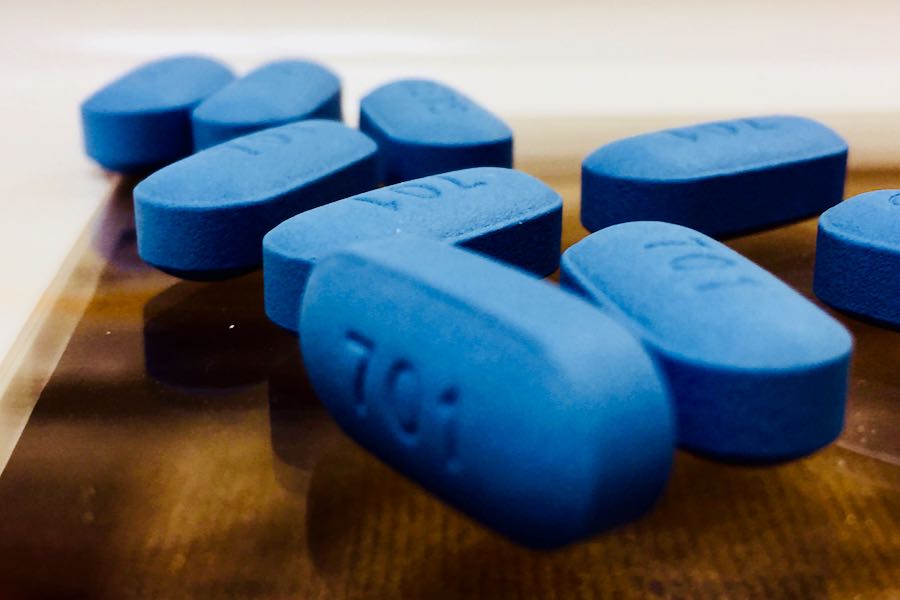What is PReP?
PReP (pre-exposure prophylaxis) consists in pills taken before sexual intercourse and/or risky behaviour to significantly reduce the risk of contracting HIV. PReP is therefore used by people without HIV, to prevent themselves from contracting HIV and from becoming HIV-positive. PReP consists in the fusion (called Truvada) in a single pill of two drugs: Tenofovir DF and Emtricitabine.
Furthermore, PReP is different from PEP (post-exposure prophylaxis), which consists of taking three HIV drugs immediately after (within a few hours) an episode where a risk of infection exists to avoid contracting the virus.
Green light to PReP?
PReP is already widely used in many countries, especially in the Anglo-Saxon world (in the USA the go-ahead was given in 2012) and in August 2016 the EU’s authorities also approved it. It is now up to individual countries to implement its use.
In Australia, however, doubts started to arise: a The Lancet HIV article from the 6th of June based on a study conducted in this country has highlighted how being protected by PReP has pushed more and more people to no longer use condoms, thus exposing themselves to the risk of contracting other STDs (Sexually Transmitted Diseases).
The risk compensation
The risk compensation phenomenon is the same thing that made drivers speed and drive more recklessly when seat belt laws went into effect, and that now seems to push more homosexual or bisexual men to have unprotected sexual intercourses.
In fact, in Sydney and Melbourne (the two most populous Australian cities) the percentage of HIV-negative homo- or bisexual men who reported having anal sex with casual partners who use PReP has increased from 2% in 2013 to 24% in 2017, while those who use condoms has dropped from 46% to 31% in the same period of time, with a consequent spread in these cities of other STD that the PReP is not able to prevent, such as chlamydia or syphilis.
Despite this, the Australian model seems to bear fruit, and since 2016 (ie since PReP began to be widely publicised) new cases of HIV infection have progressively decreased.
Nevertheless Martin Holt of the University of New South Wales says that he is concerned about homosexual or bisexual men who do not use PReP, as for them the risk of contracting HIV could increase since the use of condoms is now slightly going into disuse in Australia. According to the social scientist, these new methods of prevention are a big challenge for HIV and STD prevention campaigns.
The Australian model
From the 1st of April 2018, PReP has been subsidised by the Australian government through the Pharmaceutical Benefits Scheme (PBS), significantly reducing its cost: it can be reduced up to just 6.40 AUD per month with a Concession Card (health benefits for socio-economically disadvantaged people).
The media campaigns promoting its use, often in form of short video advertisements online but also as billboards, had already begun years before and continue to this day, examples are those of Emen8 o EndingHIV.
PReP in Italy?
Italy on the contrary seems rather ignorant in regard to PReP, very few know what it is and even less use it. Moreover, in Italy PReP is not subsidised by the state as in Australia or in France, therefore most of those who use it get it from abroad. However, the fact that in Italy PReP is not common could be also something positive, because it would give Italians more time to observe and learn from the mistakes of nations where PReP has been a reality for years.
The problem, however, is that this hesitancy seems to arise not from a desire to proceed more cautiously, but from a general lack of interest in STD prevention, unjustified disinterest since data tells us that in Italy there are almost 4000 new infections per year, almost one every two hours. In addition, there is an increase in contagions via sexual intercourse, which constitutes the 85.6% of the total contagions, demonstrating that also in Italy the use of condoms seems to be decreasing in both homo- and heterosexual risky intercourses, even though we do not have PReP as an alternative to condom yet.
Giovanni Gottardo
©2018 Il Grande Colibrì
foto: NIAID (CC BY 2.0)
Read also:




